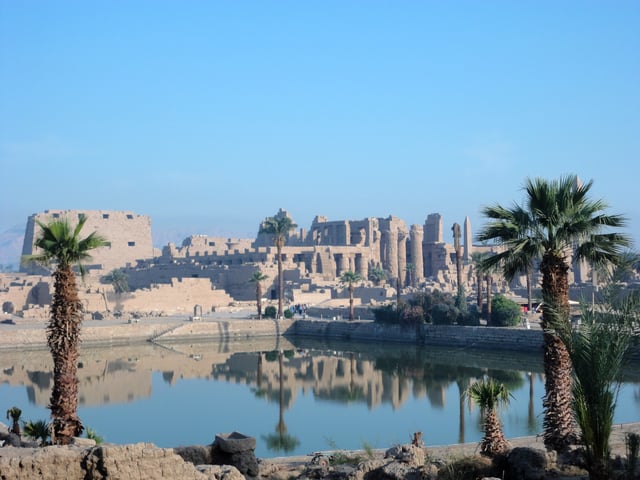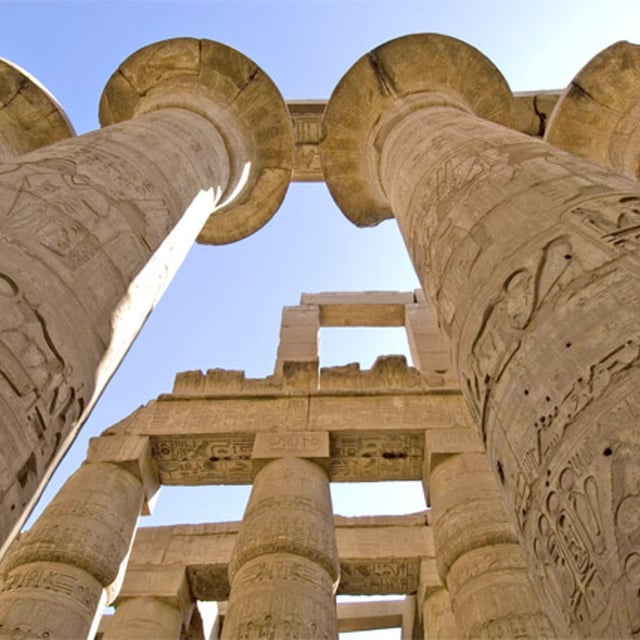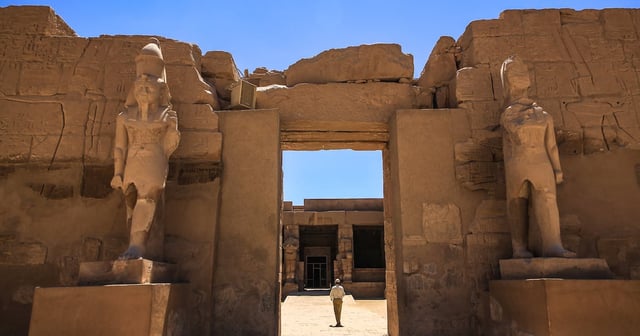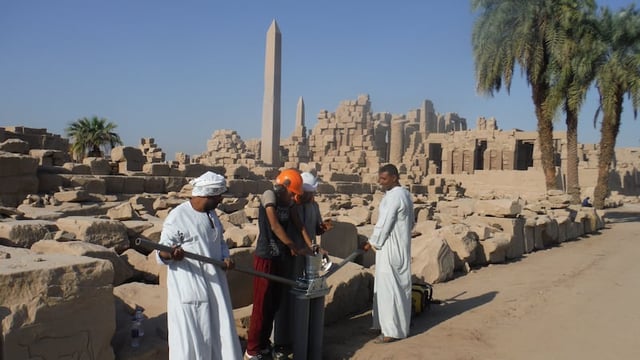Overview
- Researchers report the site was unsuitable for permanent occupation before about 2520 BCE due to fast-flowing Nile floods, placing the earliest activity in the Old Kingdom.
- Analysis of 61 sediment cores and tens of thousands of ceramic fragments underpins the revised timeline, with the earliest ceramics dating to roughly 2305–1980 BCE.
- The complex originated on elevated ground formed between eastern and western Nile channels, with the eastern channel found to be more distinct than previously thought.
- Evidence indicates ancient builders reshaped the riverscape by dumping desert sands into channels to create new ground and by building over silted former waterways.
- The findings resolve a long-running debate over Karnak’s age and the team has a concession to extend surveys across the wider Luxor floodplain.



